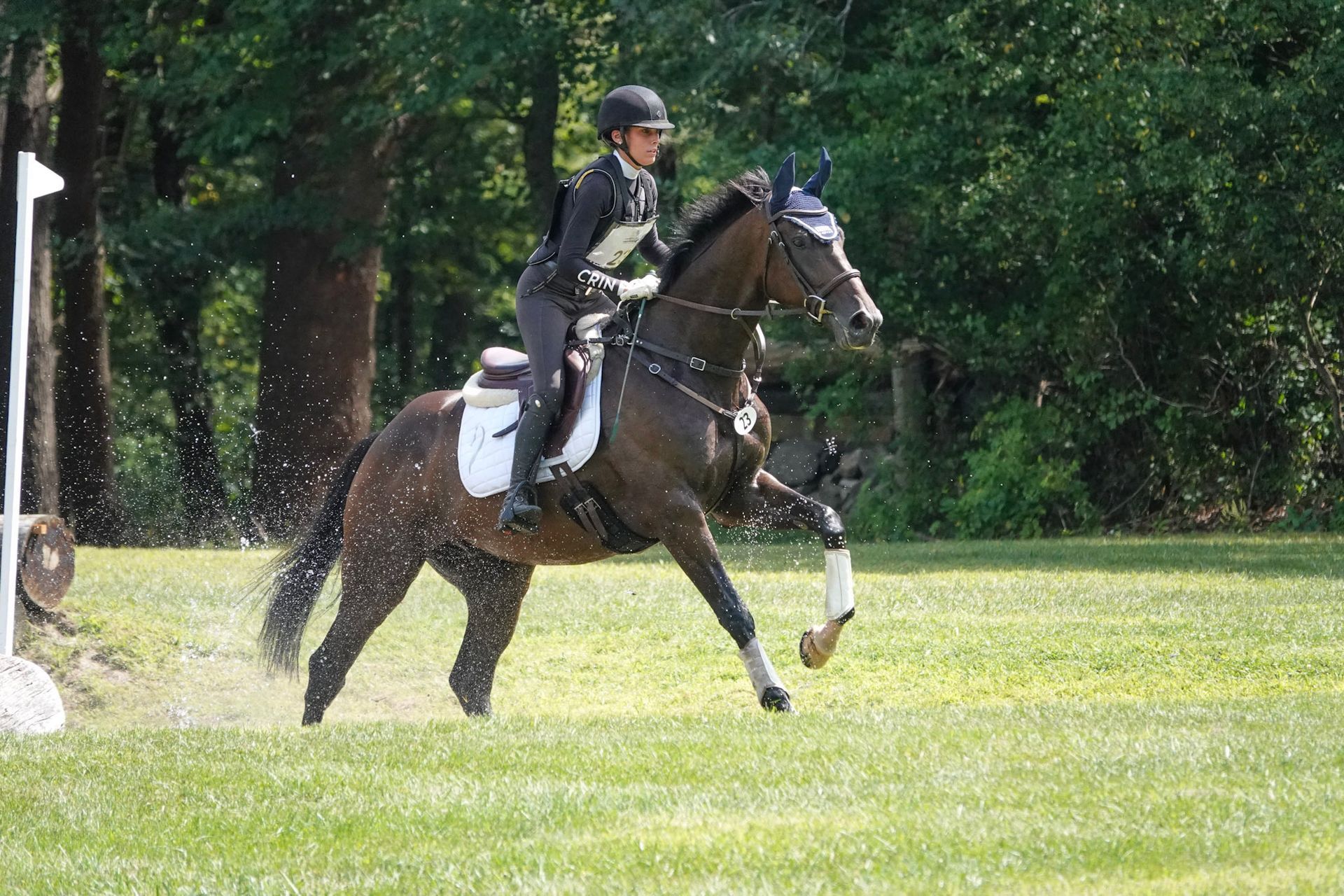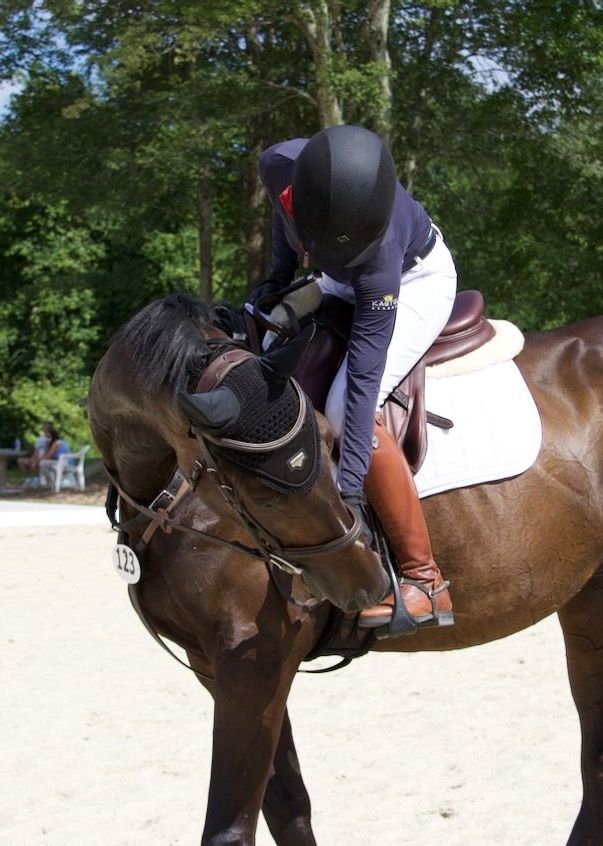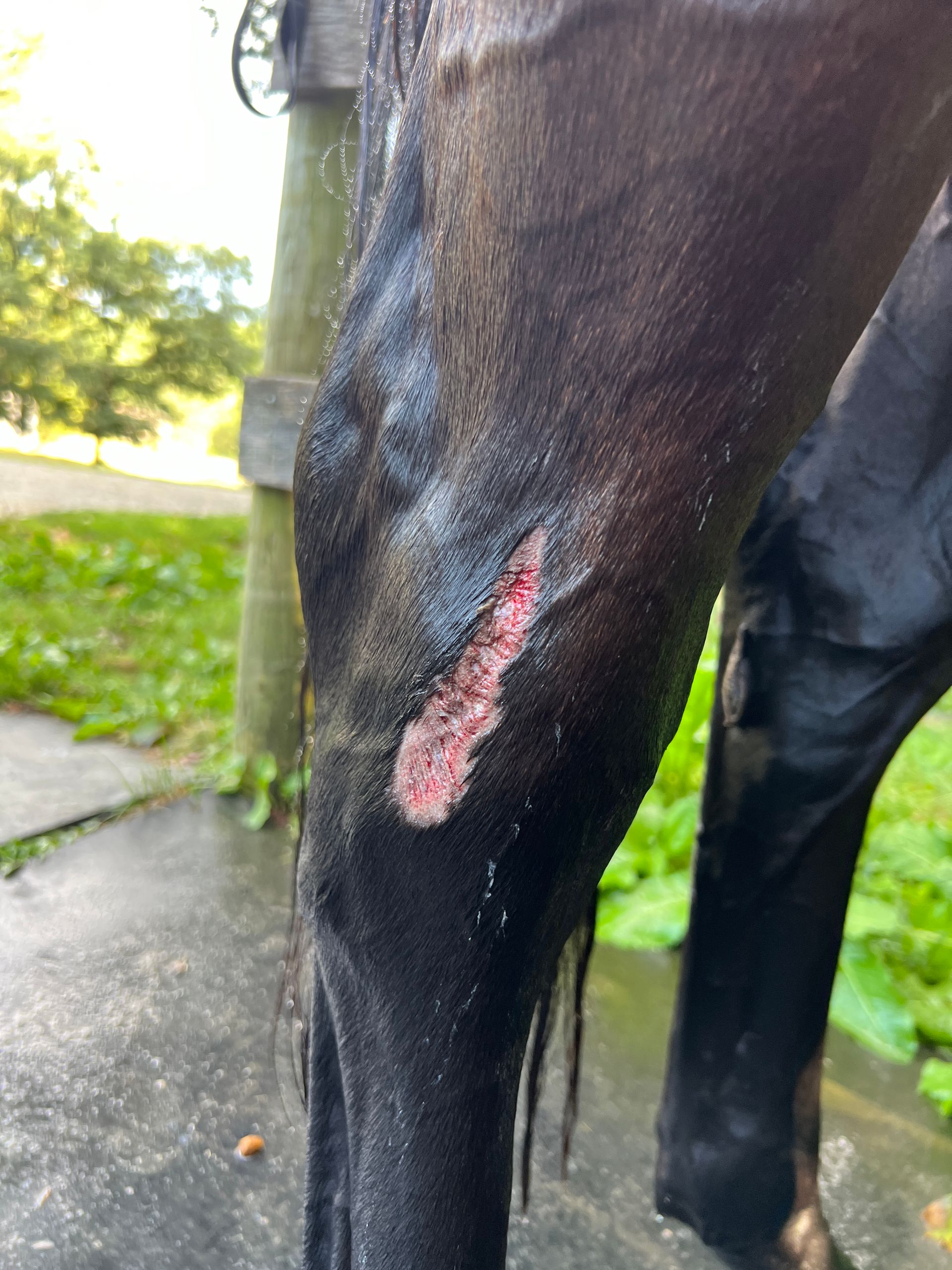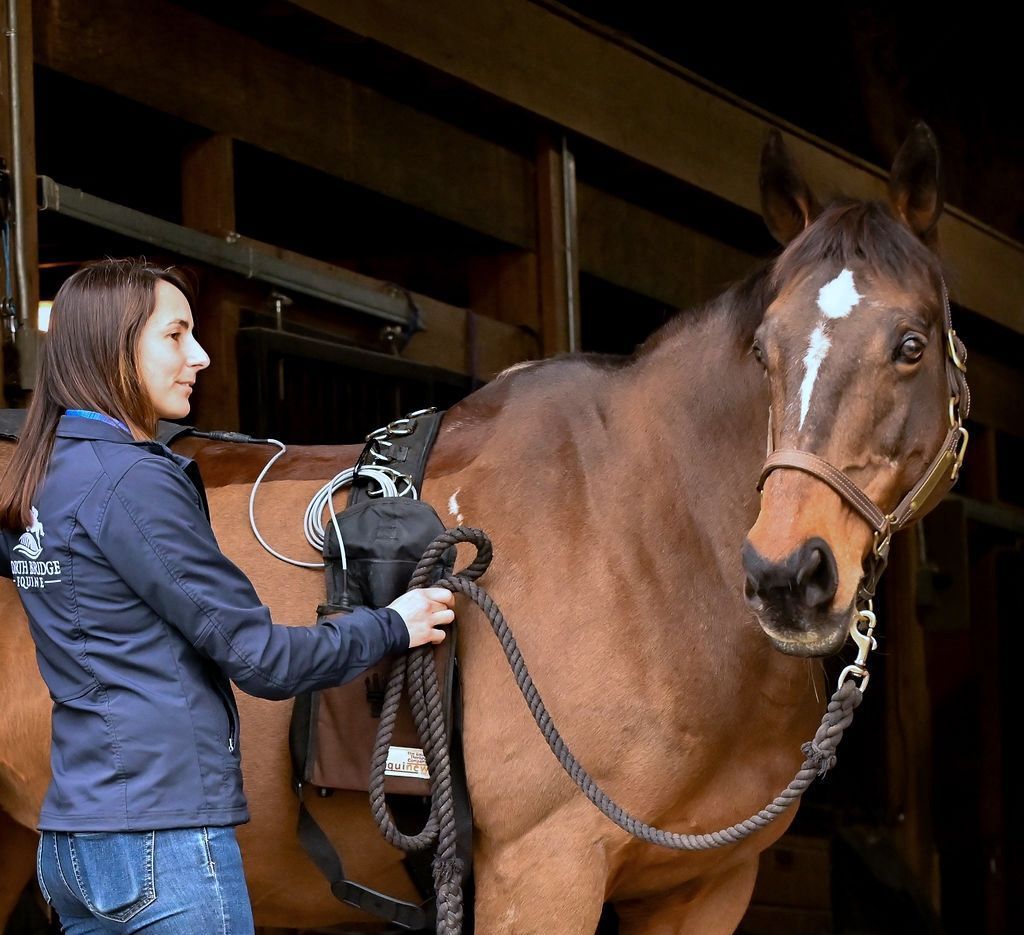Blog
Home
/ Blog
Allergies in Horses
North Bridge Equine • June 20, 2024
Causes, ways to manage, and how to keep your horse comfortable

At all times a horse’s body is under siege from the abundance of microorganisms present everywhere. A healthy immune system keeps these minute organisms at bay as inflammatory cells wage invisible battles to repel foreign proteins (antigens) attempting to invade the body. Normally, the immune system holds its line of defense without the horse even knowing that its immune system is at work.
When microbes invade and colonize, a horse shows clinical signs of disease. But occasionally, an immune response overreacts to a noninfectious cause. Such a hypersensitivity response is referred to as an allergy; it can range from a serious, life-threatening systemic reaction (anaphylaxis) to a mild, but disagreeable, skin reaction such as hives or itching.
The immune system of a horse diligently monitors for any potential threats, producing specific antibody proteins targeted at particular antigenic triggers. Surprisingly, an allergic reaction does not typically occur upon initial exposure to an allergenic protein. It is only when the skin becomes sensitized and encounters the allergen again that clinical signs manifest.
The perplexing nature of hypersensitivity reactions in horses is further compounded by their gradual development over weeks, months, or even years. Consequently, the sudden appearance of hives cannot always be attributed to recent changes, making it challenging to pinpoint the exact source of the issue. This intricate interplay between the horse's immune system and allergic responses underscores the importance of careful observation and comprehensive understanding in managing equine health effectively.
Urticaria, commonly known as hives, can be triggered by a multitude of factors. Medications like antibiotics, antiparasitic drugs, and hormones, as well as certain vaccines, have been identified as potential culprits. Additionally, foods such as plants, hay, and supplements can also lead to urticaria. Hypersensitivities, including adverse food reactions, contact allergies, and genetically linked atopy, can play a significant role in the development of this skin condition. In some cases, urticaria may arise from infections caused by bacteria, fungi, or parasites, or even from stings by insects.
The mechanism behind urticaria involves allergen-specific antibodies (immunoglobulin E or IgE), which upon initial exposure, prime mast cells and basophils for a Type I hypersensitivity reaction upon subsequent encounters with the allergen. This process leads to the release of biochemical substances like prostaglandins and histamines, triggering an inflammatory response. Understanding the diverse causes of urticaria is crucial in effectively managing and treating this condition.
When dealing with hives in horses, it is beneficial to act promptly and seek professional advice. If your horse is experiencing an acute allergic response, contacting your veterinarian immediately is essential. While hives may not bother some horses, others may itch and feel discomfort. In such cases, providing cool water soaks can offer relief. However, it is generally advised not to administer any medications before your veterinarian assesses the situation. Hives typically resolve on their own within one to two days and do not significantly impact the horse's overall health.
In more severe instances, treatment with epinephrine and corticosteroids may be necessary. Although antihistamines may not be highly effective for acute hives, medications like hydroxyzine or cetirizine could help in limiting the allergic response. Remember, the well-being of your horse is paramount, and consulting with a veterinarian for proper evaluation and guidance is always recommended in such situations.
In more severe instances, treatment with epinephrine and corticosteroids may be necessary. Although antihistamines may not be highly effective for acute hives, medications like hydroxyzine or cetirizine could help in limiting the allergic response. Remember, the well-being of your horse is paramount, and consulting with a veterinarian for proper evaluation and guidance is always recommended in such situations.
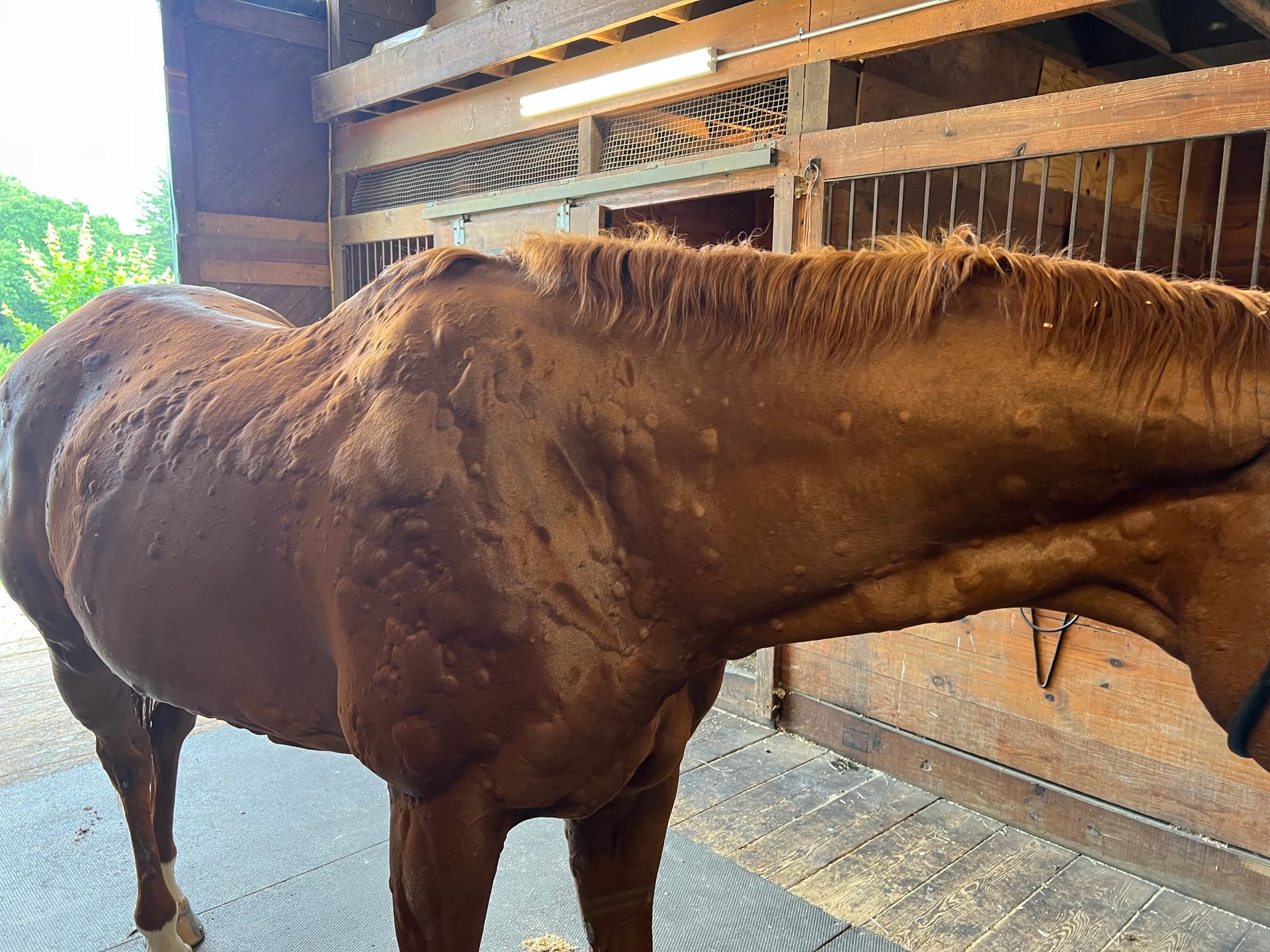
In the event of an allergic response in your horse, it is crucial to distinguish it from infections such as skin parasites or bacterial/fungal infections like ringworm. Administering corticosteroids without proper differentiation can exacerbate a mild infection, transforming it into a severe and challenging issue to address. One key indicator is the rapid hair loss within a few days in cases of ringworm, contrasting with the absence of hair loss in hives. Should hives manifest, prompt action involves discontinuing any new medications or food supplements. The principle of 'less is more' is emphasized, advocating for the removal of all supplements and herbs from the horse's diet except for hay, rather than attempting to resolve the issue by introducing additional supplements. This approach can prove to be more effective in managing the condition.
You can also consider alternative methods alongside conventional Western medical treatments. Holistic therapy, such as acupuncture, can be effective in addressing allergic problems directly. Whether the medical approach is rooted in Western or Eastern philosophy, it is crucial to avoid exercising a horse under saddle when they are experiencing hives. Sweat can exacerbate the physical discomfort around the bumps, while tack can further irritate the inflamed tissue. It is advisable to wait for a day or two for the hives to fully resolve before resuming regular work with your horse.
In the case of a one-time occurrence of hives in your horse, identifying the exact cause may be challenging. However, if hives become a recurring issue, it becomes important to pinpoint the allergen triggering the reaction. A proactive approach involves reflecting on recent changes in your horse's diet, environment, medications, vaccinations, or stress levels. By compiling a list of potential triggers and sharing it with your veterinarian, you can streamline the investigative process.
Effective management of hives in horses often revolves around minimizing exposure to potential allergens through ingestion, contact, or inhalation. Through careful observation and investigation, you can potentially uncover the root cause of the hives and take necessary steps to prevent future occurrences. By working collaboratively with your veterinarian and employing time-tested strategies, you can ensure the health and comfort of your horse.
Effective management of hives in horses often revolves around minimizing exposure to potential allergens through ingestion, contact, or inhalation. Through careful observation and investigation, you can potentially uncover the root cause of the hives and take necessary steps to prevent future occurrences. By working collaboratively with your veterinarian and employing time-tested strategies, you can ensure the health and comfort of your horse.
Another option is allergy testing to pinpoint allergic sources such as pollens, molds, grasses, weeds, dust mites, insects, and farm plants. This method requires the horse to be off medications like steroids or antihistamines for a period of 10-30 days prior to testing. Once an antigen is identified, immunotherapy injections, also known as hyposensitization, can be administered to target the specific allergen. This process is gradual and should be sustained for a minimum of one year. By gradually administering small doses of allergy vaccine, the horse's immune system can build tolerance to the allergen, leading to reduced or no reaction upon re-exposure. This innovative approach aims to enhance equine well-being and mitigate allergic reactions effectively.
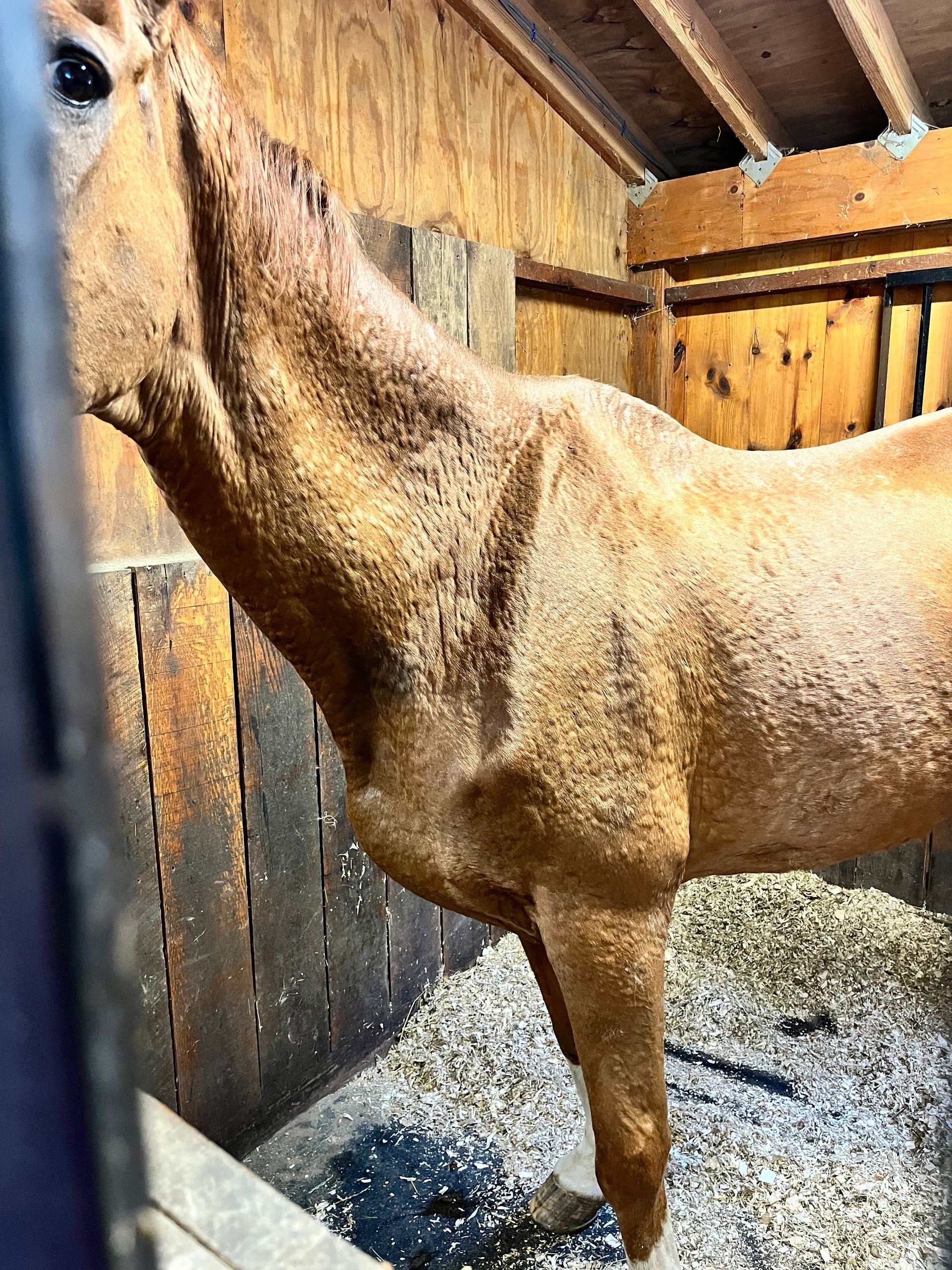
Recent Posts
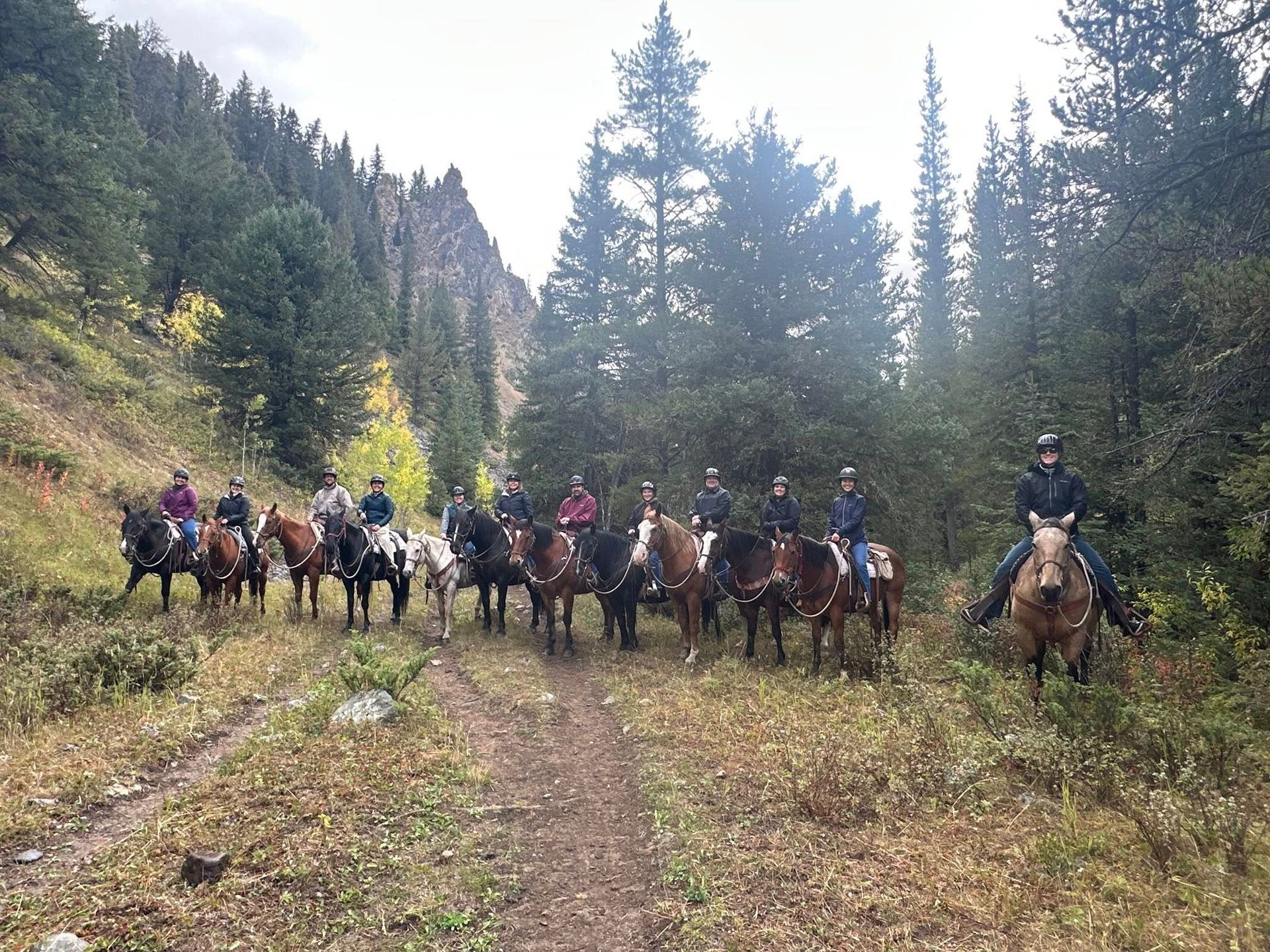
Caring for horses takes a team—and at the center of that team are equine veterinarians. But the reality is that many vets leave equine practice within their first 5–10 years. Long hours, emergency calls, and the stress of running a business can make it difficult for even the most passionate doctors to stay in the field. For horse owners, that means fewer veterinarians to call on, longer waits for appointments, and the risk of losing trusted relationships just when horses need care the most. Decade One was created to change that.
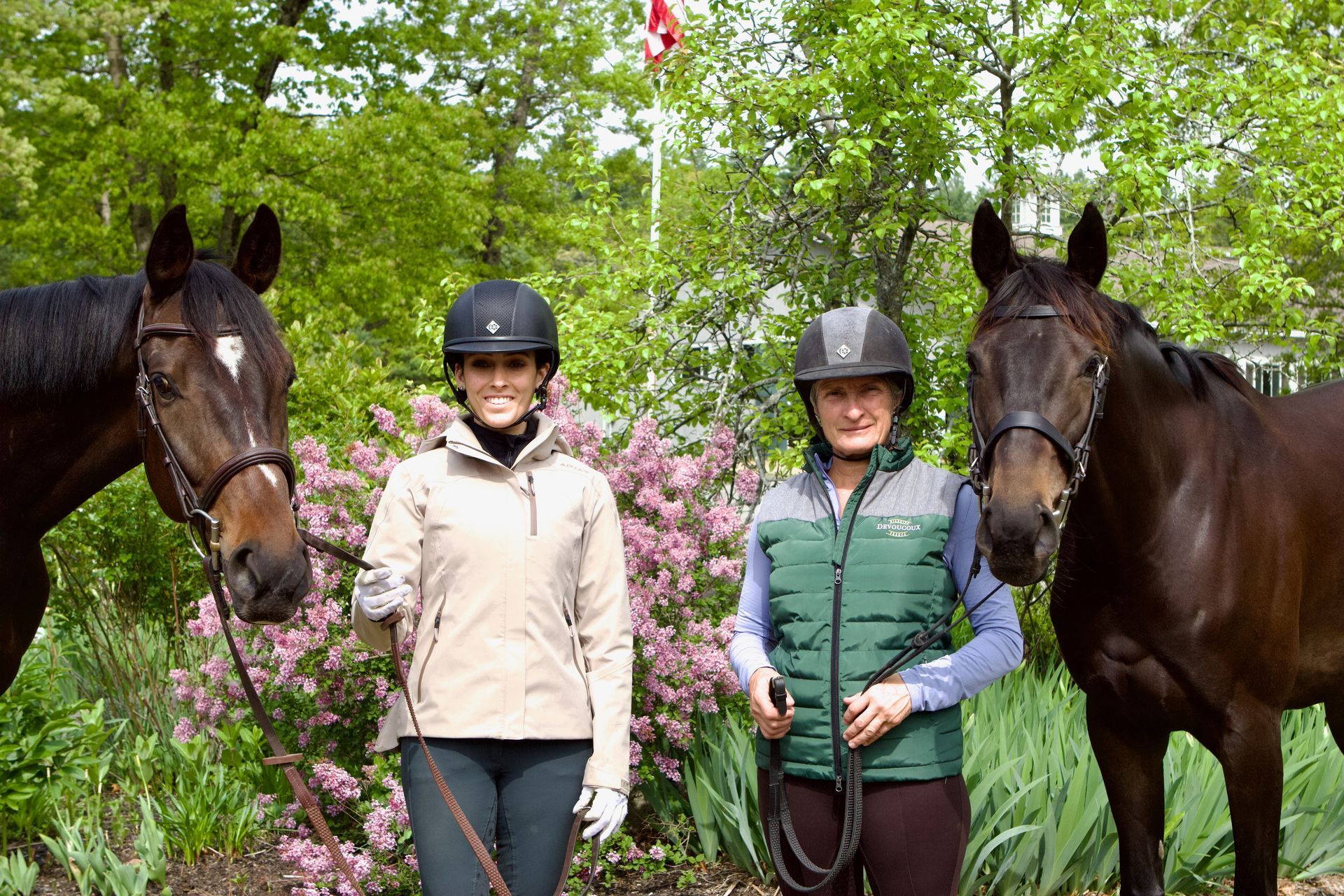
In the heart of Apple Knoll Farm, two dedicated horsewomen and long-time clients of NBEA, Adrienne Iorio and Julia Grella, are embarking on an extraordinary journey—one filled with transformation, determination, and the undeniable spirit of the Thoroughbred. Their partners in this challenge, Jasmine (Caribbean Night) and Gus (Magnetic Appeal), are no strangers to the competitive world. Once fierce contenders on the racetrack, these athletic Thoroughbreds are now stepping into a new chapter, where training meets trust, and a second career takes shape. Through the 2025 Retired Racehorse Project Thoroughbred Makeover, they will evolve into polished competitors, their talents shining brightly on the grand stage of Kentucky Horse Park this October. But this isn’t just about competition—it’s a celebration of possibility. The Thoroughbred Makeover, hosted by the Retired Racehorse Project (RRP), is the largest Thoroughbred retraining event in the world, proving time and time again that these horses are more than their race records. With disciplines ranging from dressage and show jumping to ranch work and eventing, the Makeover showcases their adaptability, heart, and limitless potential for success beyond the track. Meet the Stars of the Journey: Caribbean Night ("Jasmine") – A 2019 mare by Cross Traffic, Jasmine left her mark on the racing world with 28 starts, 3 wins, 7 seconds, and 4 thirds, earning $67,416 along the way. Magnetic Appeal ("Gus") – A 2021 gelding by Enticed, Gus showed promise with 12 starts, 2 wins, 1 second, and 1 third, securing $24,400 in earnings before finding his way to this exciting new challenge. As we cheer on Adrienne, Julia, Jasmine, and Gus, we celebrate not just their hard work, but the incredible journey of all off-track Thoroughbreds that make up a large percentage of the horses that we work with and support—their resilience, their versatility, and their boundless future beyond the track.




